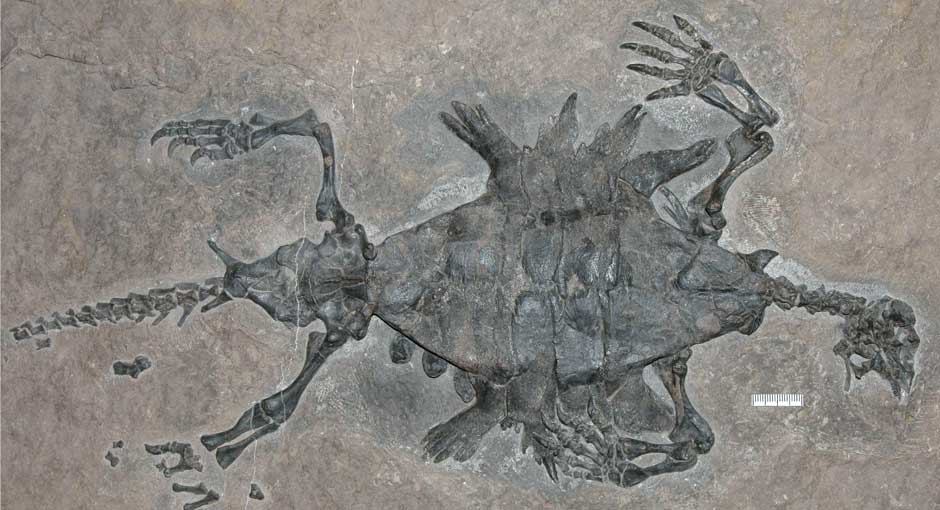[Recent Entries][Archive][Friends][User Info]
| Time | Text |
|---|---|
| 06:47 pm [Link] |
Odontochelys Odontochelys semitestacea — древнейшая из известных науке ископаемых черепах. Представитель полностью вымершего подотряда Proganochelydia. Строением панциря Odontochelys резко отличался от современных черепах. Он не имел спинного щита (карапакса). Скелет демонстрирует только некоторую степень видоизменения позвоночника и рёбер в сторону образования карапакса. У Odontochelys был клюв, как у современных черепах, но при этом во рту присутствовали не характерные для современных черепах зубы. Останки этого животного были найдены в характерных морских отложениях, что привело учёных к выводу о морском образе жизни Odontochelys. Остаётся неясным вопрос о том, почему у данной черепахи отсутствует карапакс — либо панцирь этого вида находился в стадии формирования, либо карапакс вторично атрофировался из-за приспособления к морскому образу жизни ради улучшения маневренности и увеличения скорости плавания. Скелеты представителей этого вида найдены в юго-западном Китае. Их возраст 220 миллионов лет (верхний триас). Aside from the presence of teeth and the absence of a solid carapace, a few other skeletal traits distinguish Odontochelys as basal compared to other turtles, extant and otherwise. The point of articulation between the dorsal ribs and the vertebrae are decidedly different in Odontochelys than in later turtles. In a comparison of skull proportions, the skull of Odontochelys is far more elongated pre-orbitally (in front of the eyes) compared to other turtles. The tail of the prehistoric turtle was longer in proportion to its body than other turtles. In addition, the transverse processes found in the tail are not fused such as in later turtles. Also, the scapulae of the examined specimens were identified to lack acromion processes. Taken together, these anatomical differences have been interpreted by the discoverers to mean that Odontochelys has some of the most primitive features ever seen in a turtle and is somewhat of a transitional fossil. Some scientists, however, are skeptical of this idea. Reisz and Head propose that Odontochelys does not represent a turtle with a partly evolved shell, but that it is a descendant of an older, land–living turtle, and that the shell became reversed. Such shells can be seen on modern turtles, like the leatherback turtles (the genus Dermochelys). Proganochelydia — древнейший из известных науке, полностью вымерший подотряд черепах. Включает три известных на данный момент монотипических семейства. Отличаются от современных черепах наличием зубов и другими примитивными признаками.
a, Skeleton in dorsal view. b, Skull in dorsal view. c, Skull in ventral view. d, Body in dorsal view. Teeth on the upper jaw and palatal elements were scratched out during excavation. Abbreviations: ar, articular; as, astragalus; ca, calcaneum; d, dentary; dep, dorsal process of epiplastron; dsc, dorsal process of scapula; ep, epiplastron; fe, femur; fi, fibula; gpep, gular projection of epiplastron; hu, humerus; hyo, hyoplastron; hyp, hypoplastron; il, ilium; ipt, interpterygoid vacuity; j, jugal; ldv, last dorsal vertebra; m, maxilla; n, nasal; na, naris; op, opisthotic; p, parietal; phyis, posterolateral process of hypoischium; pm, premaxilla; po, postorbital; prf, prefrontal; q, quadrate; sq, squamosal; st, supratemporal; sv1, 1st sacral vertebra; ti, tibia; ul, ulna; vot, vomerine teeth; I, V, 1st and 5th metatarsals.
|
| Reply: | |





